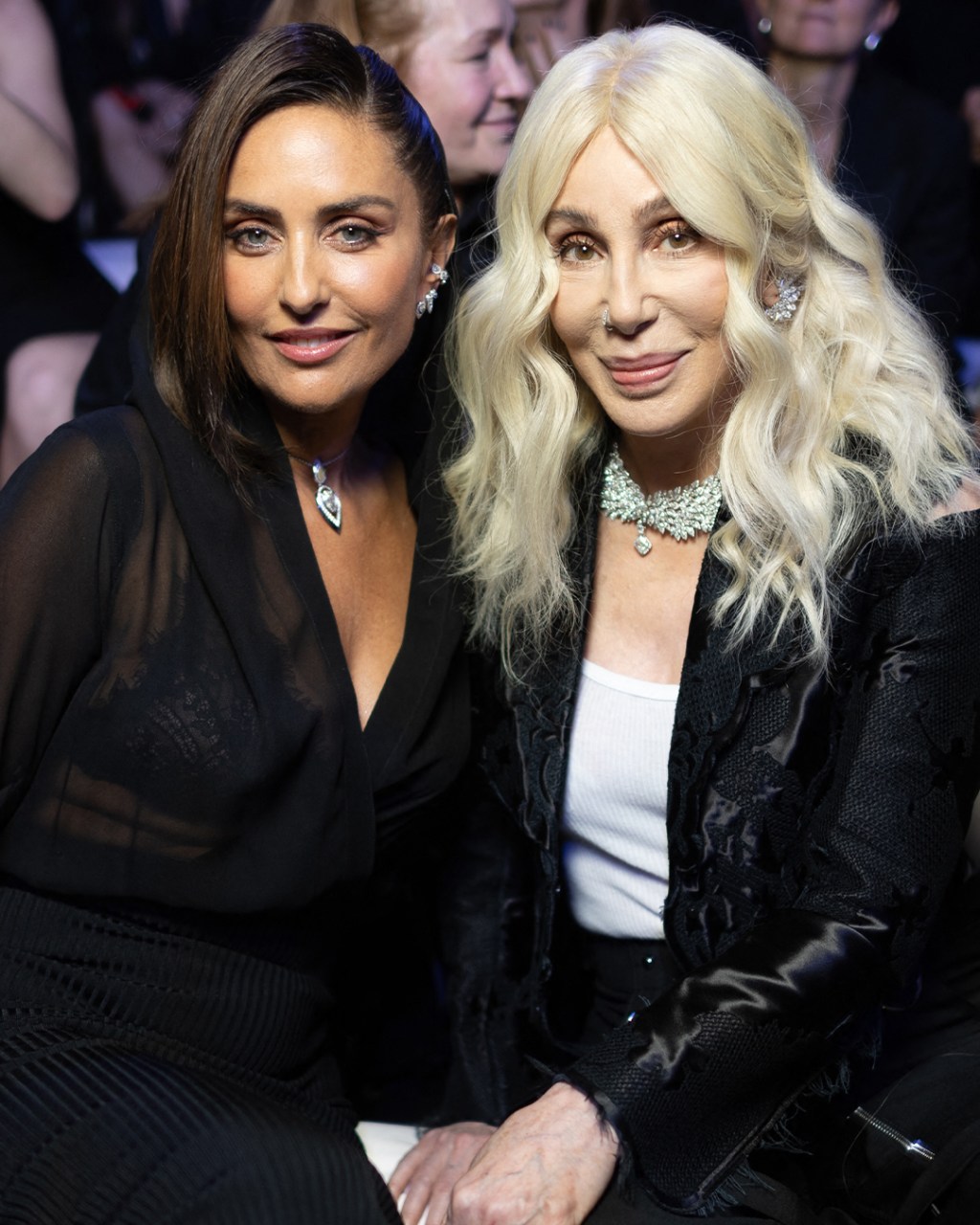An Exclusive Look at Van Cleef & Arpels High Jewellery Collection Inspired by the Grand Tour
Travel around Europe’s most romantic cities with Van Cleef & Arpels’ new collection.
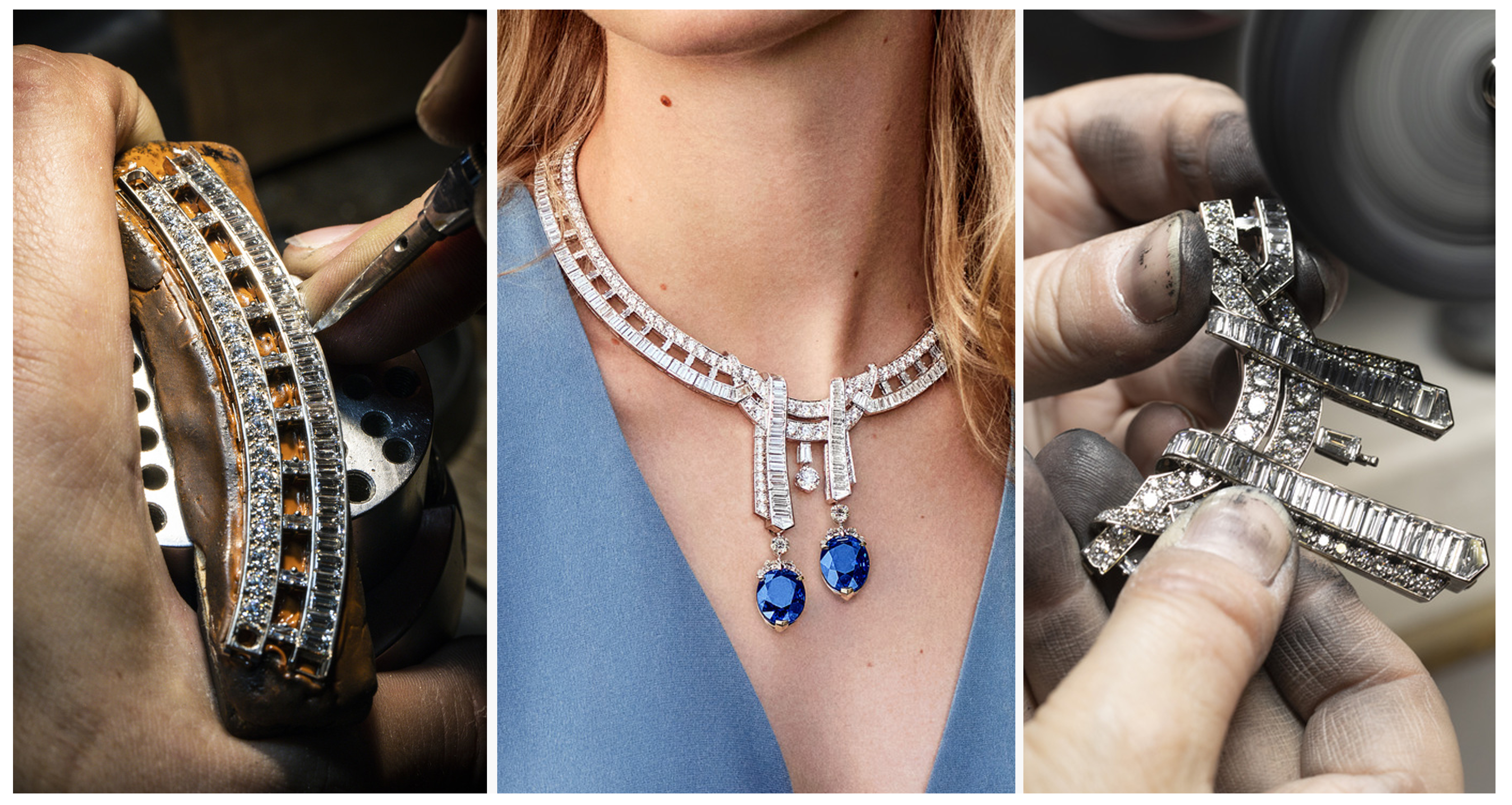
The eye must travel and thankfully now the feet can follow. Wanderlust has taken the world by force as we see airline travel advance, even beyond pre-pandemic levels. This desire to experience another place, another culture firsthand has classical antecedents. The “Grand Tour” described the education through travel taken by the elite and privileged of the sixteenth century. Now this historical and personally historic adventure through the wonders of Europe inspires a new high jewellery collection by storied Maison Van Cleef & Arpels.
Nicolas Bos, President and CEO of Van Cleef & Arpels, embarks upon the journey exclusively with Only Natural Diamonds.
OND: How did Van Cleef & Arpels land on this theme for a collection of high jewellery?
NB: Well, it’s been quite a long story. I think that the jewellery and the creative arts, in general, have long been inspired by the idea of travel: travel to faraway countries, the discovery of an ancient or exotic civilization. The whole story of Van Cleef and Arpels, and jewellery in general, is filled with collections referencing Egypt or Persia or South America, or Japan as a source of inspiration. The idea of travel is very much associated with the old world because of the craftsmanship and the stones. It’s embedded in the inspiration.
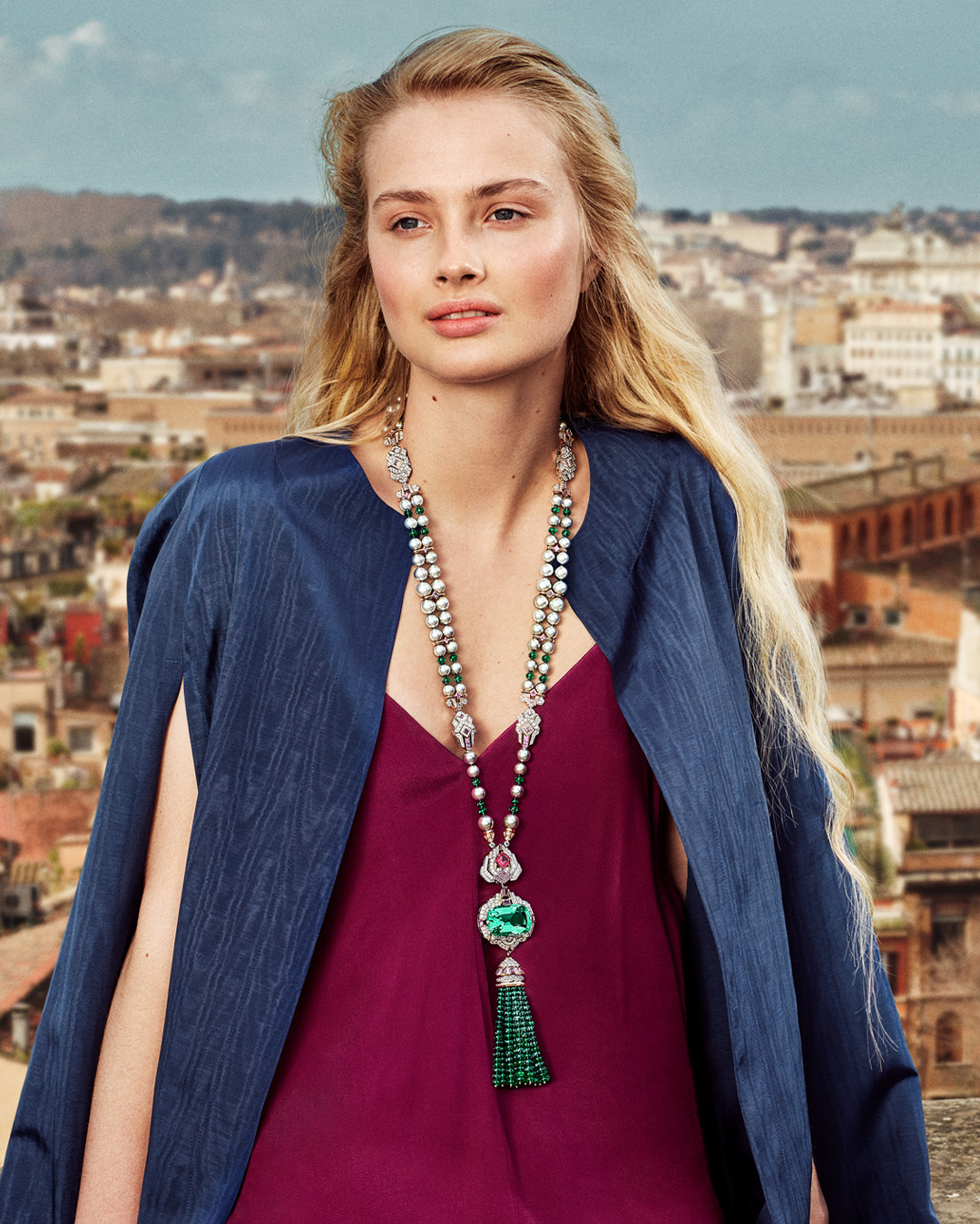
Of the travel that inspired us, we felt that the Grand Tour was one of the origins of travel and was very often referenced in the nineteenth or twentieth century. It’s a phenomenon well-known in the Anglo-Saxon world, but far less in France or in other countries. I was always fascinated by it. Not only the memory that we have today but really what it meant at the time, how it was created, how it developed.
We discovered that there was much more to it than we originally thought. It’s really a phenomenon that started quite early, in the sixteenth century, and was very important for more than two hundred years. It was extremely structured and organized and not at all a kind of random traveling. [The Grand Tour] invented the basis of what we all know today as tourism. The simple fact is that the people taking the Grand Tour were called tourists and when we talk about tourism today it comes directly from the phenomenon.
The first travel guides, Baedeker, were invented to help people along their journey to give them some indication of what to see, where to go, where to sleep. The Trip Advisor of today would not exist if not for the Grand Tour and if not for Byron, Stendhal, and Goethe.
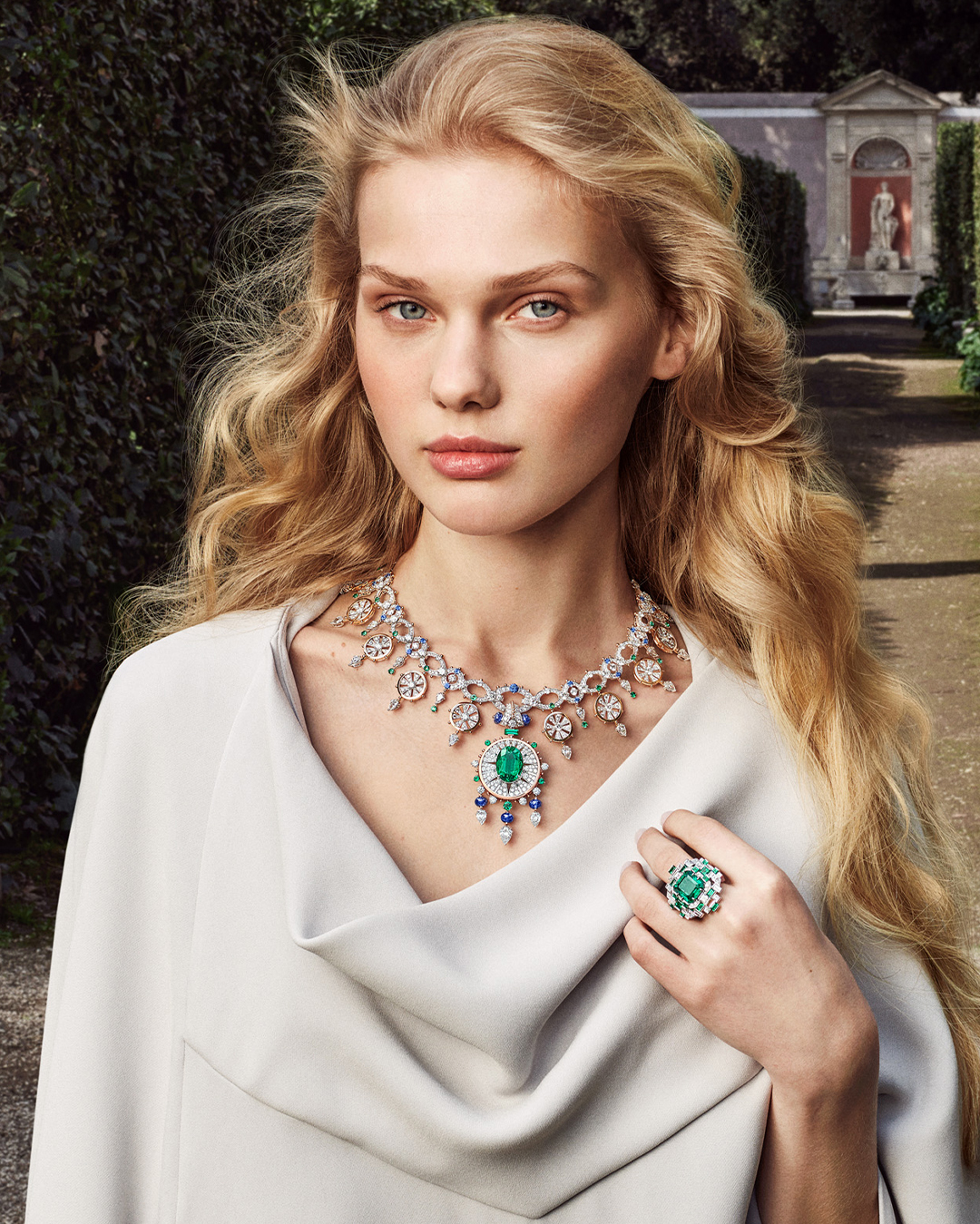
We always love when you have connections between history, culture and art, and daily life. The Grand Tour is very much about that. We decided to dig a bit more into the images, the inspiration, but also something that was intriguing at the beginning that we don’t necessarily reference in the collection, is the idea of Grand Tour souvenirs that appeared in the eighteenth and nineteenth centuries. They were the first travel souvenirs in a way – decorative objects, reproducing monuments, architecture, and also Grand Tour jewellery. There were some jewellers, particularly in Italy in the nineteenth century, that rediscovered Etruscan, Roman, and Renaissance jewellery to offer the tourists some memories of their travel that they would bring back to London or to Paris or to Germany.
There is a very, very wide cultural phenomenon that we felt was very interesting first for us to discover. All these collections are very exciting and inspiring journeys for the team to start with and then to share with our guests, with clients, and with editors. Some of whom know very well the story, some of whom discover it, some of whom dive a bit more. So, it was a very exciting conversation.
And of course, the jewels form the inspiration because there is such a richness of visual material: painting, watercolors, sculpture, and architecture from that period that was extremely inspiring in terms of shapes and colors. The idea is to pay tribute through the different steps of the journey, the different cities of the Grand Tour, to places that we know very well that we feel that we’ve seen so many times but that we could rediscover through the eyes of these travels.
Rome or Naples or the Alps that you would see and discover two hundred fifty years ago, are not the same that you discover today. We feel that because they are antique monuments they have been there forever, but Rome was a landscape that was almost a jungle with broken columns and ruins of monuments. It was only in the nineteenth century that everything was cleaned and restored to the way we see it today. This is why the Grand Tour was very important to the Romantic Movement because the whole idea of the romanticism of ruins, thinking about the past, looking at these seas of broken monuments, was very much an inspiration for poets.
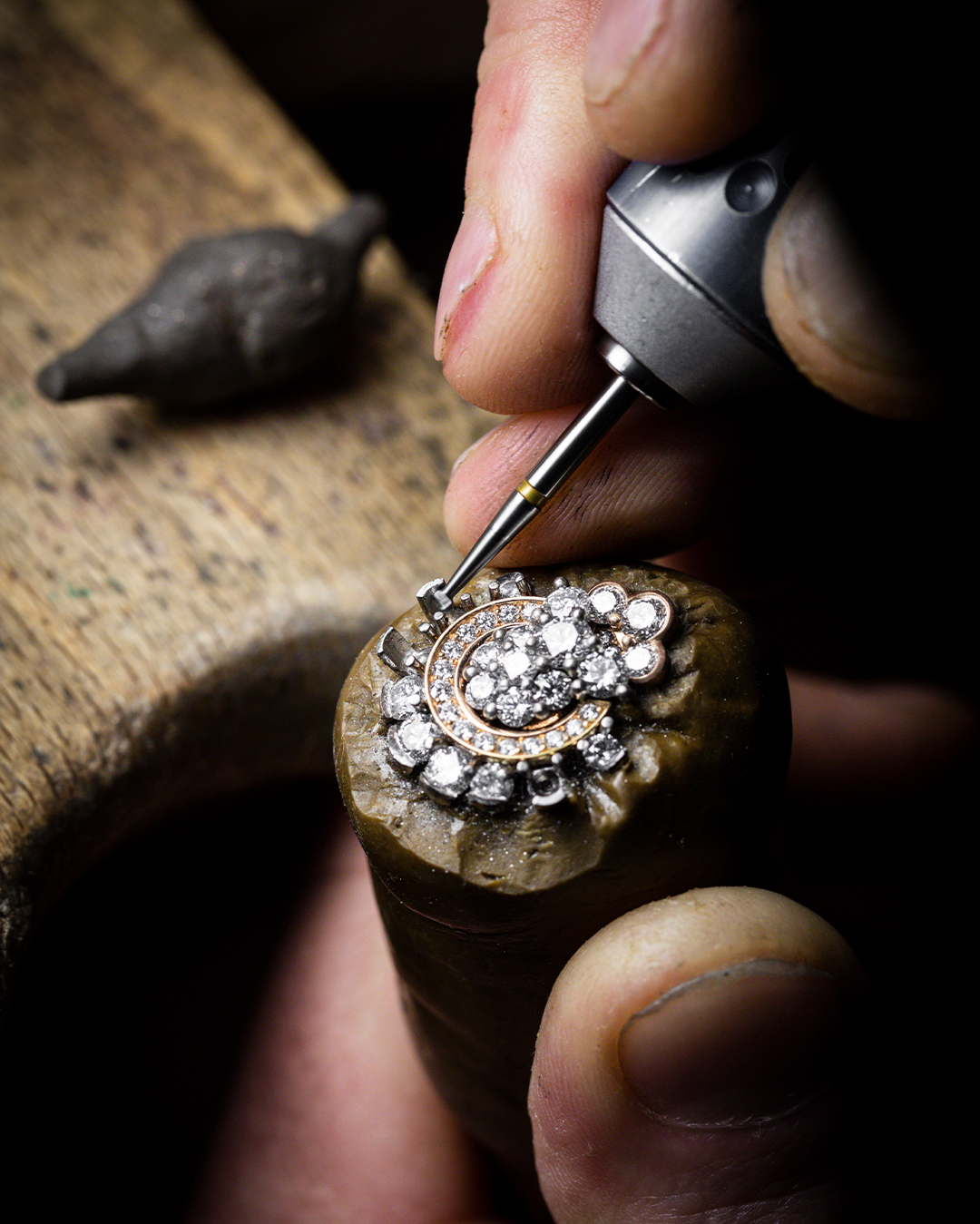
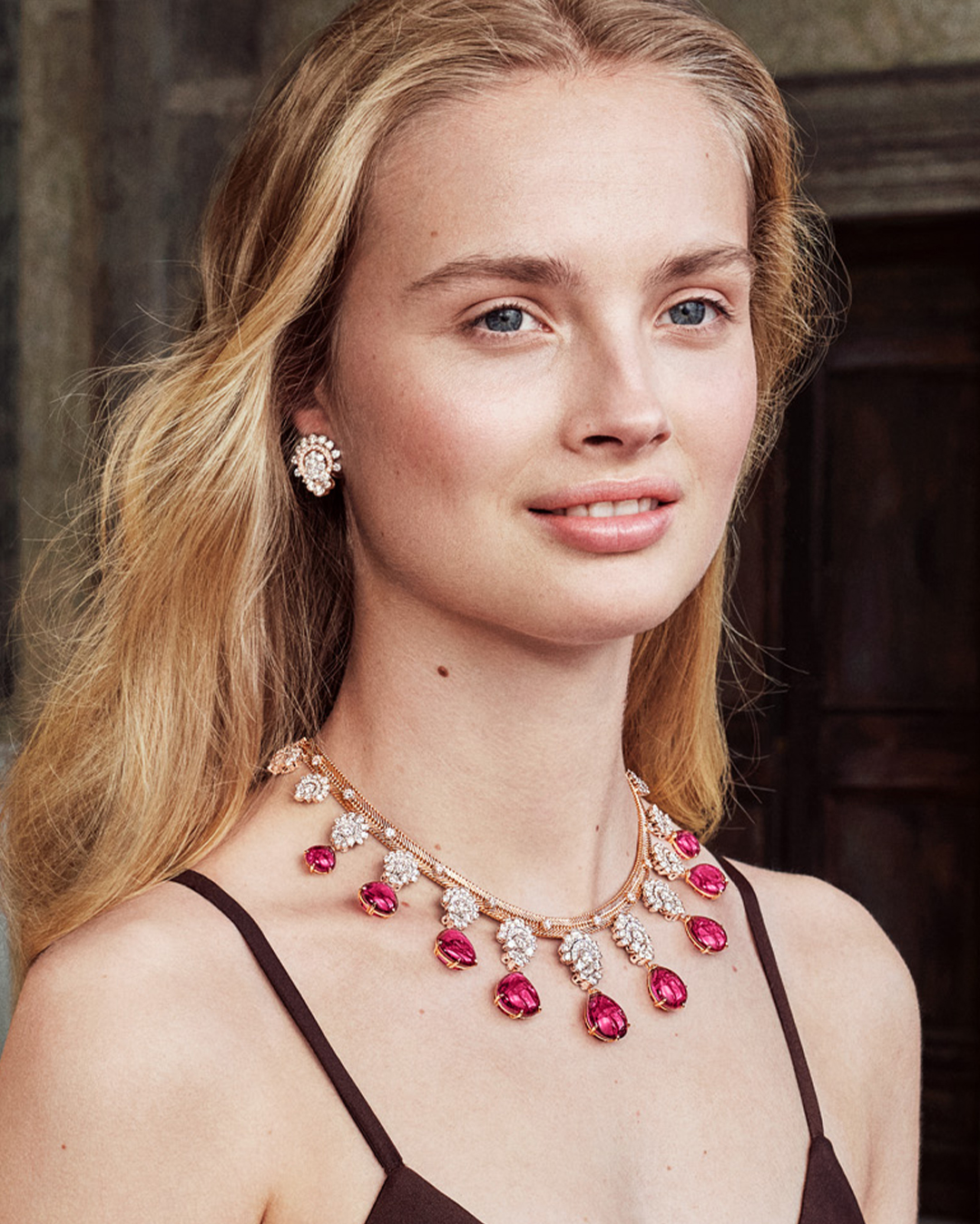
This is what we tried to translate through some of the pieces. Of course, you can recognize some elements that are very familiar: the bridges of Venice or the shape of the Coliseum or the Bay of Naples, but we tried to evoke them, to render them the way we discovered them through the eyes of these travels and the antiquities. So, it was quite an exciting journey and I hope some very nice pieces of jewellery came out of it.
OND: I’m wondering in your research what you discovered about women on the grand tour.
NB: As I said, there were not so many. So that’s the one thing that’s probably a bit sad and lacking if we look at it through those eyes, but it was the reality of the time. Most of the tourists were men. They were sons of aristocratic or royal families, or artists, poets, and writers. There were a few women that went along, but not so many by themselves. It was also a journey that was quite dangerous and at the time a woman would not necessarily embark on the journey alone. So, it’s true, it was quite a masculine phenomenon at the time. But the influence it had on art and culture was very much universal.
I feel at the end of the day this is what we see today from their journey is that most of the men or the persons that were doing this Grand Tour were really driven by the discovery of art and culture and beauty. So, they were not warriors. What you find in their paintings, in their poems, is very much universal. It’s really a celebration of art and beauty and transmission that is quite I think generous and open and subtle and can be extremely inspiring for creations that are for women, or for men. It’s a genderless journey although it was probably more [for] men at the time.

Even if our world
is a world of
traditional
techniques, we
continuously try
to improve them,
to perfect them.
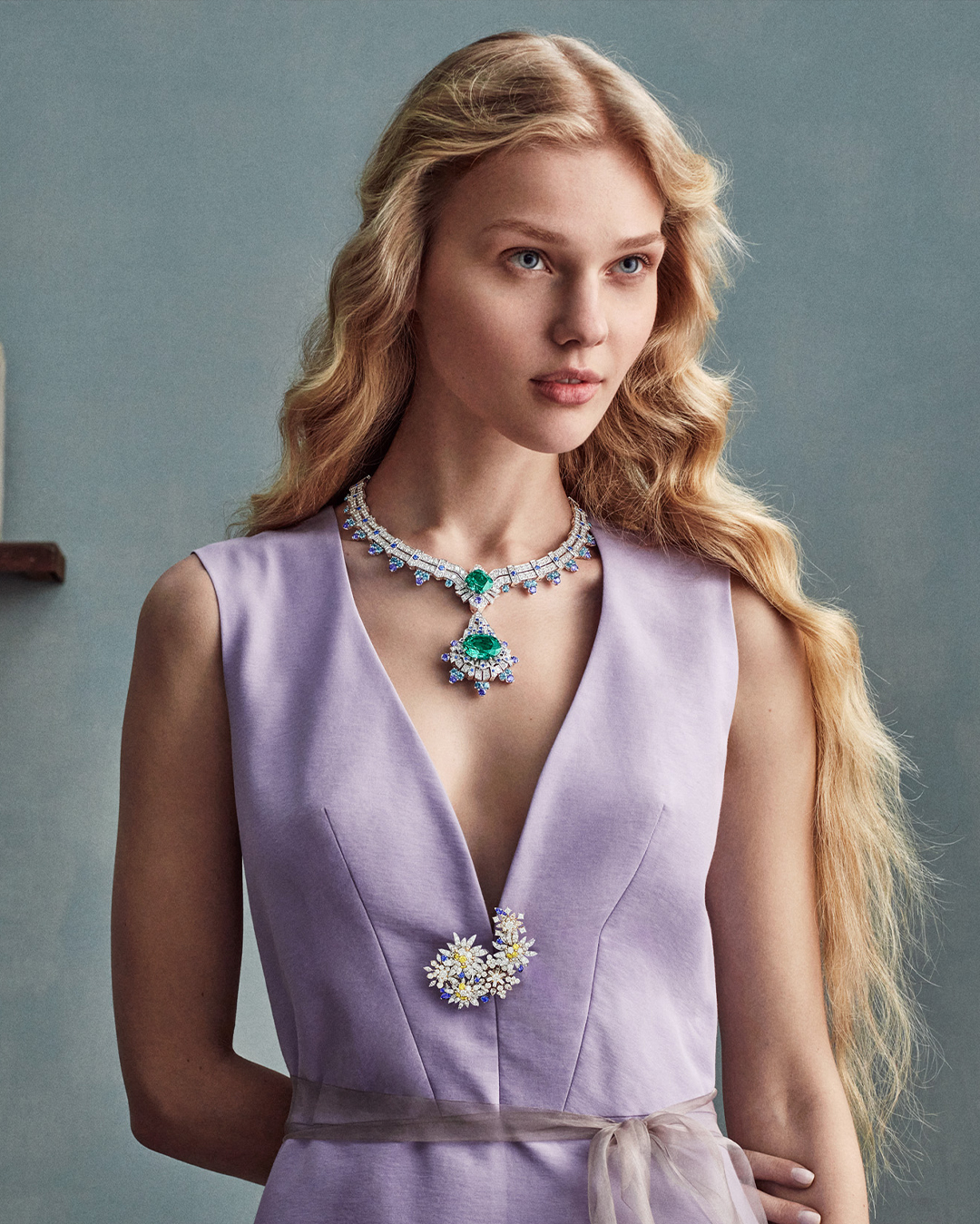
Photo by Marc de Groot, Courtesy of Van Cleef & Arpels
OND: How do certain stones express the individual cities?
NB: Very much by their characteristics, which are the materials and the colors. First, the color – there are some collections that are very much inspired by stones. The collection we showed last year was very much inspired by diamonds, which is an interesting topic for us. And some collections are more narrative, which is the case of this one. So here, the starting point is not necessarily stones or specific stones, or a category of stones. The starting point is very much the story and the journey.
Each city, each landscape, and each atmosphere that we wanted to pay tribute to through the jewels, comes with certain colors, a certain energy, a certain ambiance, and that dictated the choice of stones. For instance, the memories of the Grand Tour when you come through the Alps were very much the first visits to the mountains, to the summits, and the beauty of these ice caves. The colors were this combination of cold colors – blues, greens – but with the idea of the sunrise that brings that element of pink and purple and orange in the background. In our world, that translates immediately to stones. A tourmaline [where] you feel that you’re looking at a glacier in the sunrise.
The Bay of Naples has much warmer colors. You have the sea, you have the volcano, and you have the lush gardens so it calls for a multiplicity of colors and very vibrant colors. I was mentioning Rome, this gigantic wide garden with shades of green and then you have some elements of architecture appearing between. So, it was really dictated by the landscapes and the colors.
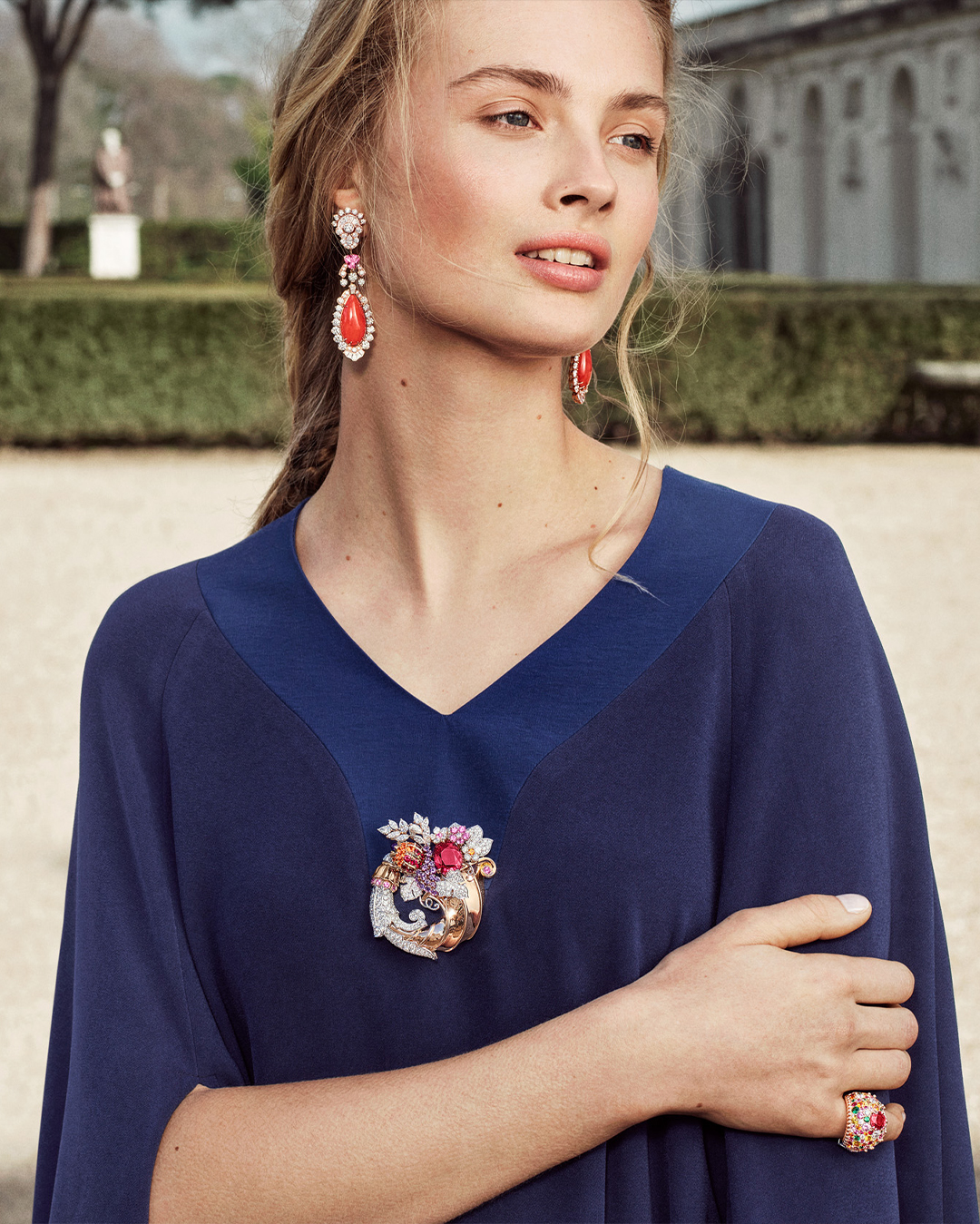
We love stones and we very often buy stones when we find specimens that are exceptional or interesting without necessarily knowing what we are going to do with them. Sometimes they wait in the safe for ten, twenty, or thirty years. That was the case in this collection. We have beautiful branches of coral that we had for a very long time that we just purchased because they were quite outstanding but not knowing what to do with them. You don’t want to cut them or to slice them.
Then as we are working on the forest of Baden-Baden, at some point we have the trunks, and then we create the leaves and the foliage. So, the stones are, as always, central in the collection but here they are an element in the painting.
OND: How did you decide which cities to include?
NB: We pretty much followed the main itinerary. We discovered [through] the research and the process that the Grand Tour was very structured, very realized, that the journey was very well defined and described. A lot of the tourists, when they started their journey, they knew exactly where they would go. Of course, some of them wandered and went to different places, but you had compulsory visits along the way.
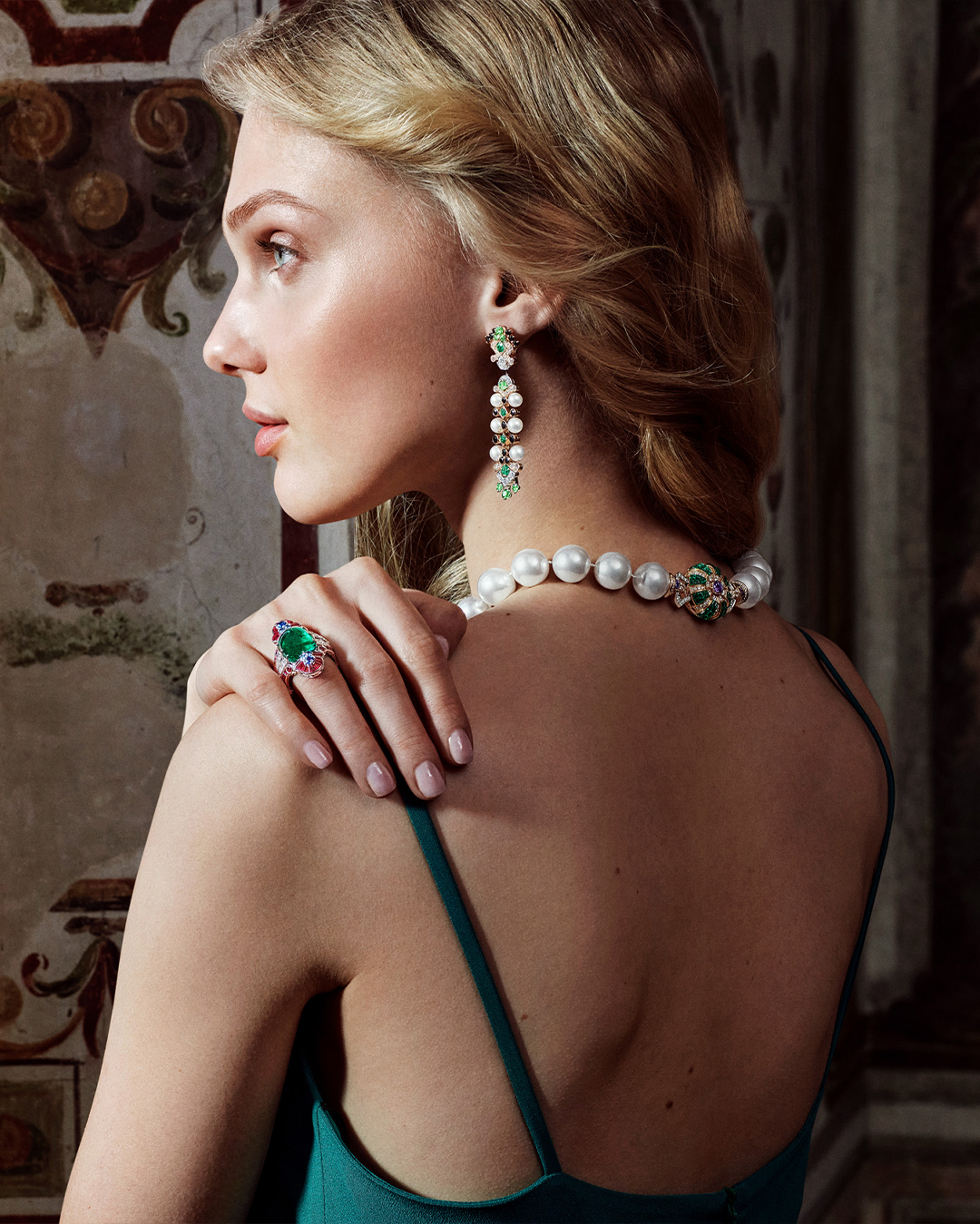
We wanted to follow their path and concentrate on some major cities. Of course, the travel to Italy was quite a central part of the Grand Tour and that’s why we have such a [number] of Italian cities. And they [travel] north to south: Venice, Florence, Rome, Naples. Here usually the travel would stop, some of the travelers would go to Sicily but a lot of them would come back from Naples directly. And they are still today very, very strong cities obviously with a very specific atmosphere and a signature monument.
What the tourists were often appreciating and looking for was quite special in each city. So, I think that the Venice locals and the specificity of the architecture: the water and the bridges. Firenze was very much about the Renaissance and at the time discovery or rediscovering of Renaissance painting, Renaissance sculpture, and architecture, which was not presented in an organized way in museums as we know it today. You had to go to private houses, to small churches to discover these extraordinary paintings and educate yourself. Rome was very much about [ancient] Rome and the remains of the empire. Naples was a mix of different things but with a specific atmosphere of the harbor and the city and probably a very lively place in the journey, not so much a celebration of the past but also a celebration of life and energy. Which is still today a bit of a mess. [laughter] In a beautiful way, which we all love about Naples. So, these were the important steps. We wanted, besides the Italian cities, to mention in the collection some, as I was saying, the stop in the Alps, Baden-Baden, which was quite important at the time in Germany, and of course, then the starting point could be London or Paris. We don’t cover the whole Grand Tour. We should create hundreds of pieces and probably cover dozens of other towns or cities but it’s –
OND: Part two?
NB: Part two, exactly. It’s an appetizer.
OND: What specific setting innovations, like mystery setting, were used in the collection?
NB: We used the whole spectrum: the traditional techniques but as always, tried to go a bit further. Even if our world is a world of traditional techniques, we continuously try to improve them, to perfect them. There is one technical element that I’m extremely proud of in this collection. There is an important series of pieces that are landscape bracelets; because the inspiration for the Grand Tour was very much this watercolor, these landscapes were paintings in journals and in travel books. So, when you look at these books, it’s got the same format, in a way, but then you go from one place to the next, one landscape to another. And so, we tried to use the format of this wide bracelet to be quite literal to that tradition and within the same frame, to have an evocation of Venice, of Rome, of the Bay of Naples.
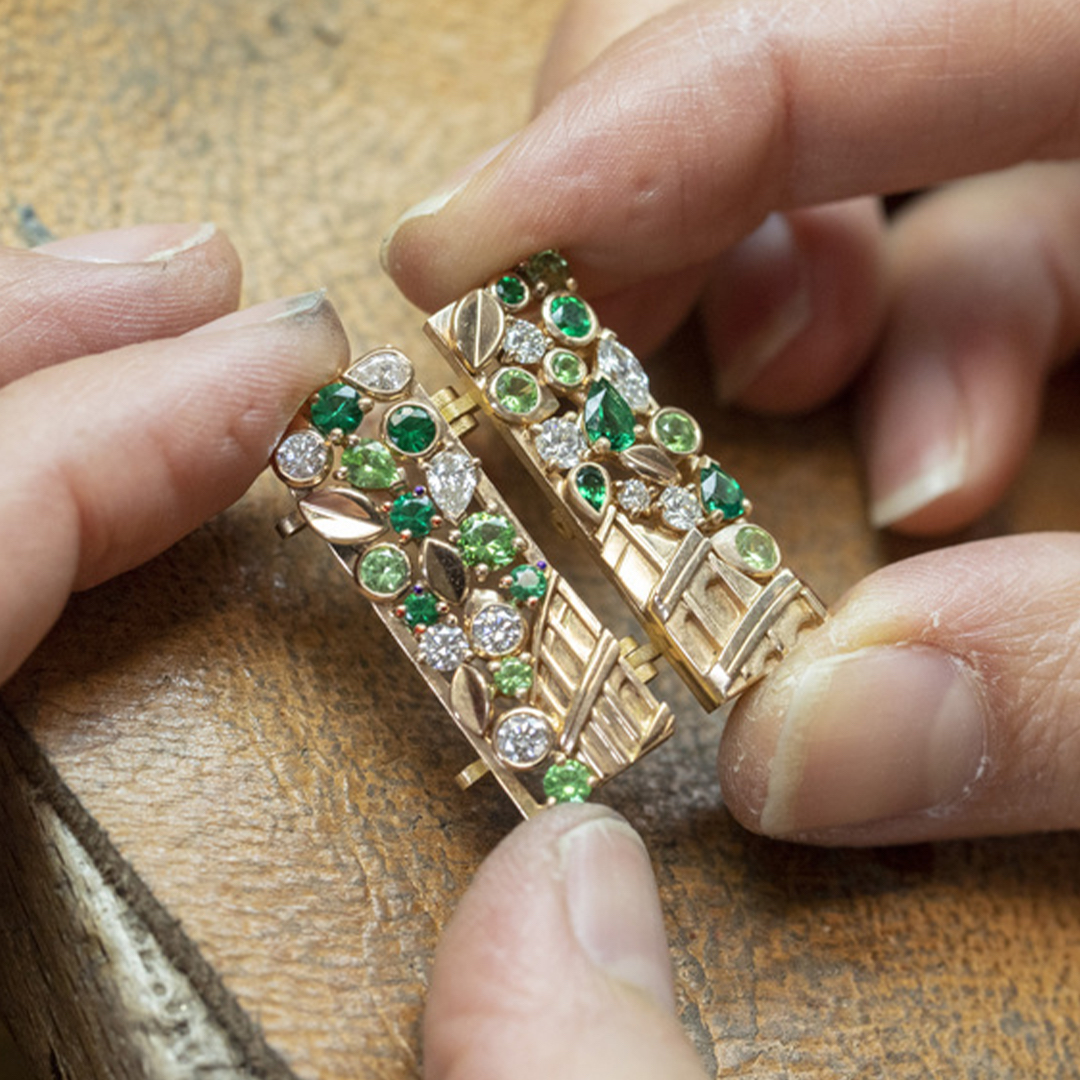
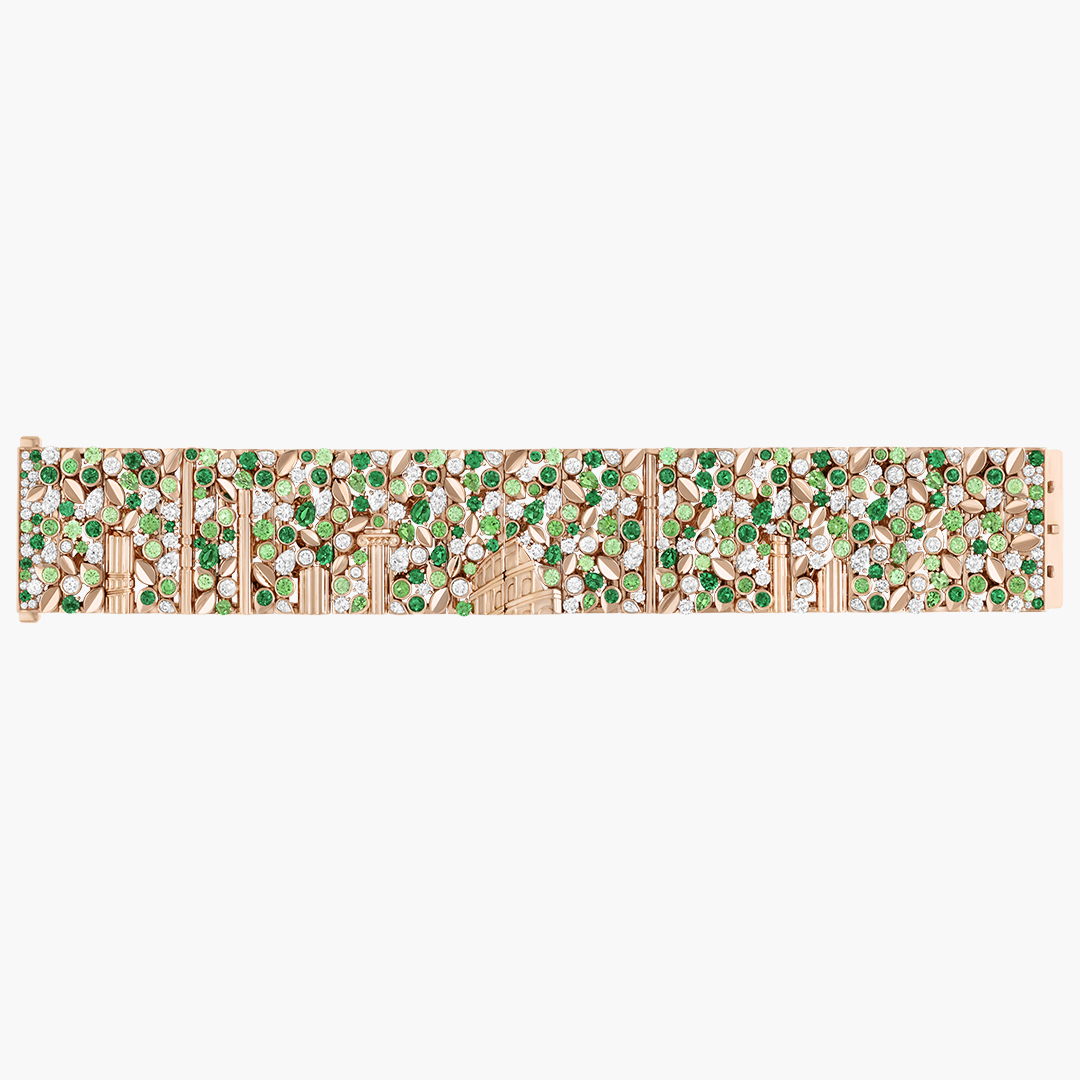
And there is something that is always very frustrating and challenging when you work with this type of structural bracelet: if they lay flat on the table or on display to see a painting with the wrist but when you put them around the wrist, the nature of connection creates some gaps, some spaces between the elements. Then you lose the integrity of the drawing and the design because you have to break the line once you go from flat to round.
We had started, over the years to try to go beyond that. And for this collection, we managed to perfect a system where you keep the full integrity of the design when you wear the bracelet on the wrist. You don’t see any gap, any void, between the elements because there is a very complex system based on traditional techniques of a double hinge at the back of each and every tiny element that enables all the sections of the bracelet to stay exactly close to each other, whatever the shape.
This is something that you don’t see that you don’t necessarily even notice or understand but there is an element of magic, and it serves a purpose: to always keep the integrity of the image. To me, these are the type of developments that are very important to know well because they show that it’s not necessarily about going through high technology or AI or robotics. There is still a lot that you can continue to improve and develop within the frame of a traditional workshop, just with talented and inventive people.
